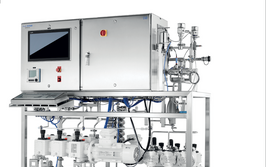Calculate – Don’t Estimate – Drug Development Costs
Researchers estimate the cost of drug development at over $1 billion, while others say it’s less than $100 million. Who’s right? And how can we accurately determine the true costs?
In one much-publicized publication, researchers estimated the cost of developing a new molecular entity (NME) in to be in the order of $1.8 billion (1). But is this overstated? Critics say yes, with some claiming that development costs are actually well under $100 million. We clearly have a polarizing debate on our hands regarding the “true” cost of developing new pharmaceutical drugs. One reason for the controversy is that most cost-of-research-and-development (R&D) studies are not reproducible. A recent review article noted that 10 of 13 cost-of-R&D studies were based on self-reported, unaudited and confidential data from unnamed companies and unnamed products (2). The non-reproducible aspects of these data raise questions about how representative R&D cost estimates really are. And we can also question the value of estimating average drug R&D costs at all given the substantial heterogeneity within a single therapeutic area. For instance, the average expected cost of developing an oncology medicine is $1.042 billion, while the cost of developing a medicine within this class – drugs that treat breast cancer – is $0.61 billion. In this case, the narrowly defined R&D cost would be more informative for decision making around new investments in breast cancer drugs.
My colleagues and I wanted to get to the bottom of the cost question. In a recent study, we demonstrated that the true expected cost of developing a specific pharmaceutical product can be reproducibly estimated using publically accessible data (3). Our method utilized Trialtrove, a database held by Citeline. The database is primarily built on data from clinicaltrials.gov, which has emerged as the go-to posting website for pharmaceutical firms.
Information required in publicly disclosed clinical research programs includes sponsorship, the identity of the investigational product and study design, such as phase, number of subjects, length of study, number of centers and primary endpoints, and more. Using these data, we were able to avoid the selection biases that may have contaminated other cost-of-R&D studies, while also obtaining information on the quantity of the “inputs” used to conduct the R&D – the number of subjects, the number of measurements per subject and study duration. Unfortunately, these data are silent on the unit costs of these inputs, so we obtained cost estimates from a well-known research group.
For the class of products we looked at – seasonal influenza vaccines – we estimate the cost of developing a new product to be around $420 million at a nine percent cost of capital rate. Cost of capital adjustments are needed to account for opportunity cost, since the money could have been used in a different investment with comparable or lower risk of failure. Therefore, the cost of development is highly dependent on who pays for the work. Generally speaking, governments have a lower cost of capital than private and public corporations. We know that the majority of the clinical development was paid for by corporations, but it’s not clear who funded the pre-clinical research.
Recently, Parker and colleagues (4,5) reported on the success rates of new drug clinical development for very specific indications: Crohn’s disease and Non-Hodgkin’s Lymphoma. But the researchers were not able to look at costs. Our project presents a usable method for all researchers – and new estimates of the cost of drug development should help reconcile some of the political debate about current estimates. Additionally, I believe that quantifying development cost estimates for a vaccine or medicine can make investment more attractive, as it reduces the high uncertainty associated with such decisions.
One of the next steps should be to develop an appropriate analytical framework for decision makers. Such a framework should evaluate development costs, anticipated technology impact and overall disease burden. Finally, further research should also focus on how development costs should inform pricing, especially now that payers are moving towards the adoption of cost-effective medicines and vaccines based on fixed price ceilings.
- S.M. Paul et al., “How To Improve R&D Productivity: The Pharmaceutical Industry‘s Grand Challenge”, Nat Rev Drug Discov 9 (3), 203–214 (2010).
- S. Morgan et al., “The Cost Of Drug Development: A Systematic Review”, Health Policy 100, 4–17 (2011).
- A. Chit et al., “Toward More Specific And Transparent Research And Development Costs: The Case Of Seasonal Influenza Vaccines”, Vaccine 32(26), 3336–3340 (2014).
- J. L. Parker, Z. Y. Zhang, and R. Buckstein, “Clinical Trial Risk In Non-Hodgkin‘s Lymphoma: Endpoint And Target Selection” J Pharm Pharm Sci. 14(2), 227–235 (2011).
- J. L. Parker and C. Kohler, “The Success Rate Of New Drug Development In Clinical Trials: Crohn‘s Disease”, J Pharm Pharm Sci. 13(2), 191–197 (2010).
Though my career I have always followed my passion and backed it up with as much rigor and discipline as I could. This is all paying off now nicely as I feel intellectually challenged and satisfied doing my bit to propel public health forward.” Ayman Chit is currently head of Health Economics, Modeling and Market Access at Sanofi Pasteur in North America. He started off with an undergraduate degree in chemistry and then moved on to study under the Master of Biotechnology program, both at the University of Toronto. Ayman says, “This Master was run jointly between the Business school and the Faculty of Science and it help me discover that my real calling was in economics. I then quickly moved on to completing a PhD in Health Economics, specializing in the economics of pharmaceutical development and valuation.


















